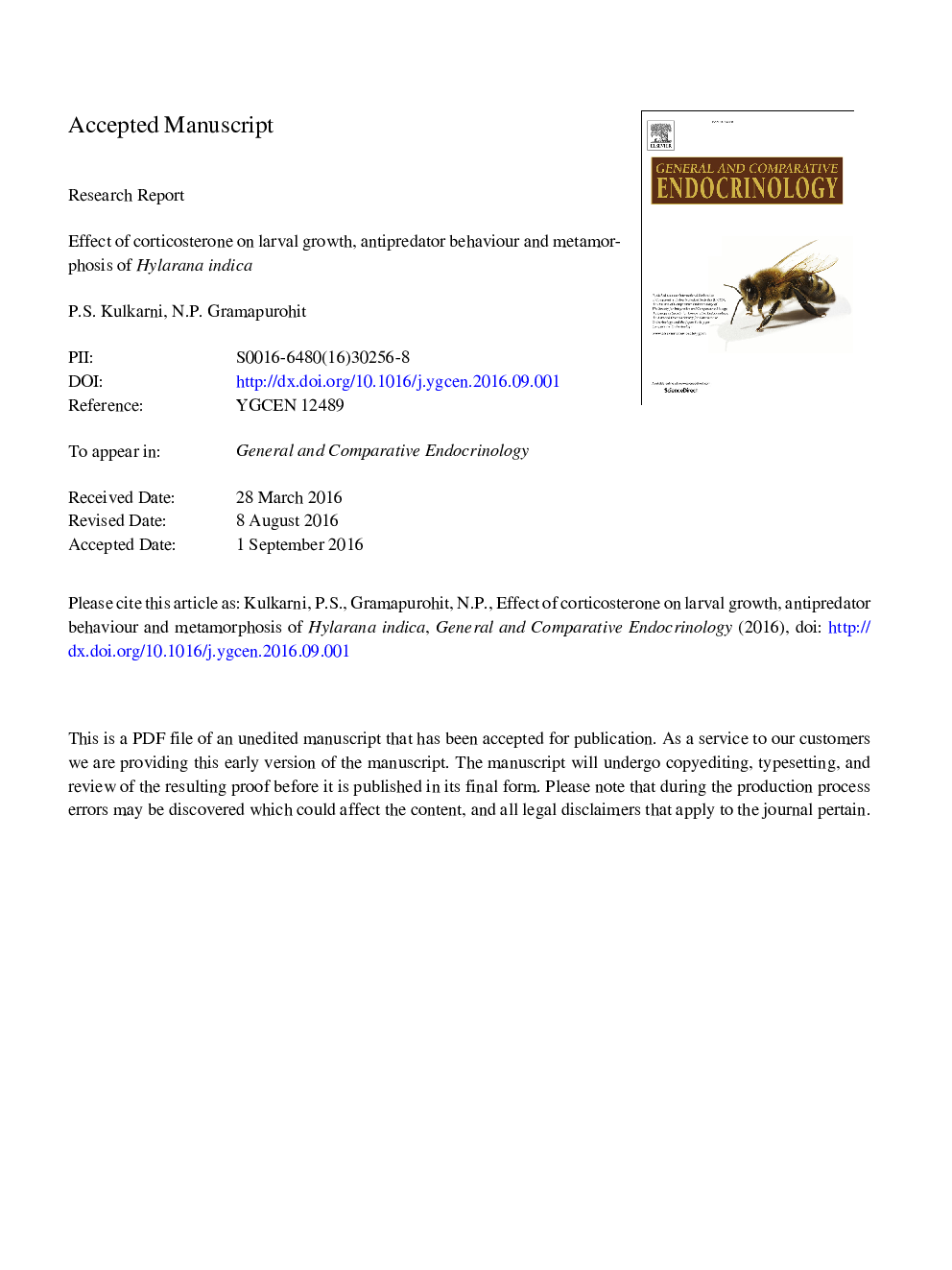| Article ID | Journal | Published Year | Pages | File Type |
|---|---|---|---|---|
| 5587594 | General and Comparative Endocrinology | 2017 | 44 Pages |
Abstract
Corticosterone (CORT), a principal glucocorticoid in amphibians, is known to regulate diverse physiological processes including growth and metamorphosis of anuran tadpoles. Environmental stressors activate the neuroendocrine stress axis (hypothalamus-pituitary-interrenal axis, HPI) leading to an acute increase in CORT, which in turn, helps in coping with particular stress. However, chronic increase in CORT can negatively affect other physiological processes such as growth and metamorphosis. Herein, we studied the effect of exogenous CORT on larval growth, antipredator behaviour and metamorphic traits of Hylarana indica. Embryonic exposure to 5 or 20 μg/L CORT did not affect their development, hatching duration as well as larval growth and metamorphosis. Exposure of tadpoles to 10 or 20 μg/L CORT throughout larval development caused slower growth and development leading to increased body mass at stage 37. However, body and tail morphology of tadpoles was not affected. Interestingly, larval exposure to 5, 10 or 20 μg/L CORT enhanced their antipredator response against kairomones in a concentration-dependent manner. Further, larval exposure to increasing concentrations of CORT resulted in the emergence of heavier froglets at 10 and 20 μg/L while, delaying metamorphosis at all concentrations. Interestingly, the heavier froglets had shorter hindlimbs and consequently shorter jump distances. Tadpoles exposed to 20 μg/L CORT during early, mid or late larval stages grew and developed slowly but tadpole morphology was not altered. Interestingly, exposure during early or mid-larval stages resulted in an enhanced antipredator response. These individuals metamorphosed later but at higher body mass while SVL was unaffected.
Related Topics
Life Sciences
Biochemistry, Genetics and Molecular Biology
Endocrinology
Authors
P.S. Kulkarni, N.P. Gramapurohit,
